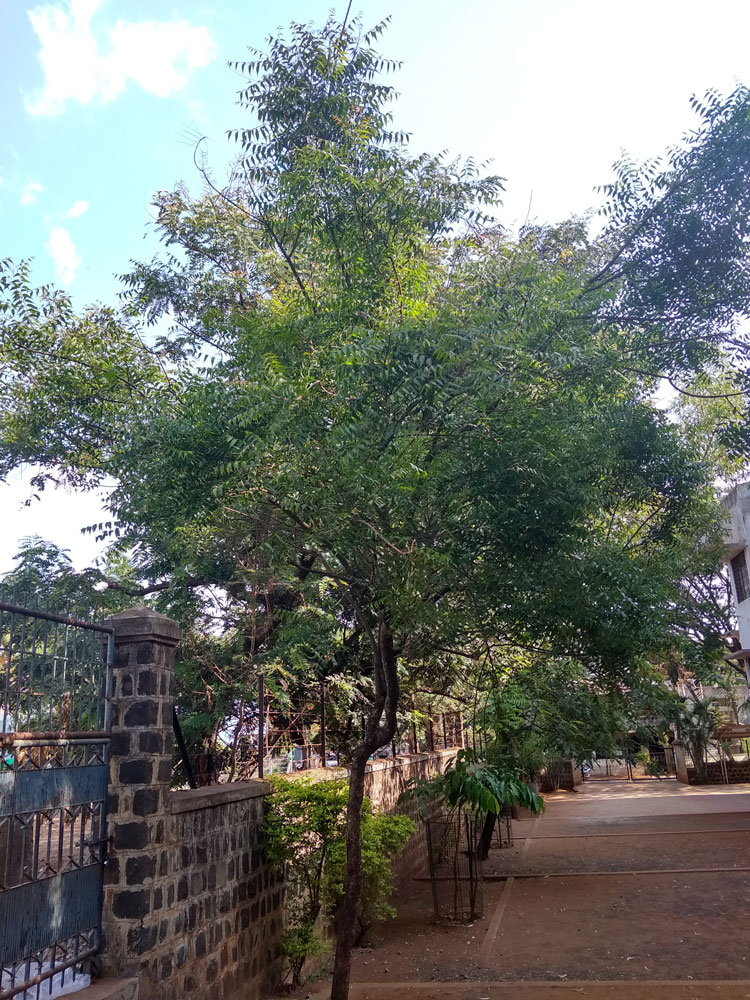Neem - Margosa

Azadirachta indica
Summary
Scientific Classification
Kingdom: Plantae
Division: Magnoliophyta
Class: Dicotyledonae
Order: Sapindales
Family: Meliaceae
Genus: Azadirachta
Species: A.indica
Scientific Name: Azadirachta indica A. Juss.
Common Names:
English: Limbdo, Neem, Margosa.
Hindi: Neem.
Kannada: Turakabevu, Bevu, bevinagida.
Marathi: Kadu Limba, Nimbay.
Description:
- Habit and Habitat: A tall evergreen tree. The bark is dark greyish on the outside and reddish brown inside, and has numerous oblique furrows.
- Distribution: It is one of two species in the genus Azadirachta, and is native to the Indian subcontinent, i.e. India, Nepal, Pakistan, Bangladesh, Sri Lanka, and Maldives. It is typically grown in tropical and semi-tropical regions.
- Morphology:
Leaf: Alternate, exstipulate, compound, imparipinnate; 7 - 15 shortly stalked pinnae are lanceolate, oblique, serrate, acuminate, unicostate reticulate.
Inflorescence: Axillary panicle.
Flower: Bracteate, actinomorphic, hermaphrodite, complete, hypogynous, scented, disciferous. Calyx made up of 5 sepals, gamosepalous, light green, valvate. Corolla made up of 5 petals, polypetalous, imbricate.
Androecium: An annular disc present between petals and stamens. Androecium made up of 10, or 8 - 12 monadelphous, filaments unite to form a staminal tube seated at the base ofannular disc, anthers dithecous, introrse.
Gynoecium: Gynoecium tricarpellary, syncarpous, superior, trilocular, two ovules in each locule, axile placentation, style simple, stigma trifid.
Fruit: Drupe.
Seeds: Fruit one - seeded.
Flowering and Fruiting time : February – August. - Propagation: Through seeds,Grafting, Cuttings.
- Importance:
All parts are bitter and are used for various purpose. Twigs are used to brush teeth. The bark and leaves have medicinal properties. The neem oil is used in creams, hair lotions and soaps. The dried leaves are used to prevent insects and pests. - Location: Main entrance garden, Sports ground.
 Trees of GSS Project supported by Makerspace Belgaum Website concept and designe by
Trees of GSS Project supported by Makerspace Belgaum Website concept and designe by